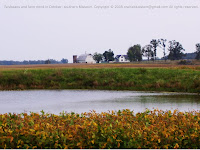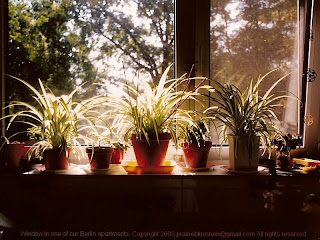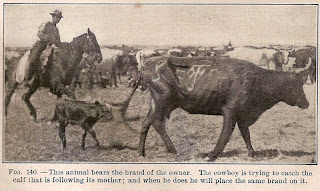Working the election
Dennis and I were poll workers in the November 4, 2008, election. He was the Democrat judge and I was the Republican judge. (Yes, we really are registered that way.)
We arrived at the polling place at 5:15 a.m., the appointed time, and found the other poll workers already setting up the signs. Dennis and I hurried to set up the voting machines. We have a good system -- I read the directions and he does the setting up. It went smoothly, and we were ready about 15 minutes ahead of time.
At 6:00 a.m., we opened for voting. A line had already formed outside the door. With our new
E-Scan system, the voters moved through at a steady pace. Each voter received a paper ballot and went to one of five privacy booths to mark it. Then the voter brought the completed ballot to the E-Scan machine to electronically record his/her vote. Many expressed appreciation for the quick and easy voting procedure.
Just one complaintWe had only one disgruntled voter. He arrived at the polls mid-morning, feeling cranky and hoping for a problem. He let us all know that he'd been listening to news reports about malfunctioning machines. We assured him that we had a very good and totally up-to-date system, but he was clearly dubious.
After he marked his ballot, he fed it into the eScan and read the message: "Your vote has been recorded. Thank you for voting!" Then he told us that was not satisfactory. He wanted the machine to also display a summary of what it had read from his paper ballot -- that is, to tell him who or what he had chosen on the ballot. (Can you imagine the bottleneck this could potentially create?!)
We told him that it was the voter's responsibility to ensure that the ballot was correctly marked before feeding it into the machine, but we would write his suggestion on the Sheriff's Report. (And we did.)
Our oldest voter was 101. He voted by the eScan with assistance from his son. We had quite a few voters who were in their 80s and 90s. They had all voted by eScan during the spring primaries, and they had no problem at all with it in this election.
We had to turn one lady away who wanted to vote. Her name was not in the voter roster, and when we called the county clerk's office, they couldn't find her name in their list of registered voters. She said she hadn't voted for over twenty years. Apparently her name had been inactive for so long that it was removed. She didn't seem surprised. It's a shame that she didn't check on her registration before Election Day.
Our son Isaac voted for the first time, and we, as election judges, helped him cast his ballot. That was a moment of pride and joy for us. I think he will be an informed citizen and a faithful voter. He is interested in history and current events.
By our unofficial estimate, based on the number of ballots used and the number of registered voters in the book, over 2/3 of the registered voters in our precinct came to the polls. It's possible that some also voted by absentee ballot. We didn't have any statistics for that.
Long DayThe polls closed at 6 p.m. Dennis and I closed down and locked up the machines, following the instructions step by step. Three tapes were printed from each machine, and all of the election workers signed each tape. One tape from each machine was hung on the door and the other tapes were for the county clerk's office.
As election judges, Dennis and I had the responsibility of carrying the briefcase with our election materials and results to the county clerk's office. We got there ahead of the rush and didn't have to wait in line at all. The girls went through the bag quickly and checked to see that nothing was missing. I am always relieved when we successfully complete that checkup!
It was about 7:30 p.m. when we got home. We attended two classes before the election and worked about 14 hours on election day. In this county for this election, workers will be paid $150 each for working. Judges who drove the results to the courthouse will also receive a small milage payment. At our house, these payments will go to Isaac's college fund.
eScan SuccessIn my opinion, the
eScan performed flawlessly at our precinct. I like the E-Scan system because the paper ballot, marked with ink, is retained when the ballot is scanned. A numbered stub from each ballot is also collected separately. The number of ballots, ballot-stubs, unused ballots, and signatures in the voter roster all must agree, so it seems to me that the system would be hard to cheat.
If there was a question about the results, the ballots could be scanned again. No "hanging chads" will create uncertainty or confusion. In fact, if there is
any problem with the ballot (such as too many votes or no votes at all or stray marks on the ballot, it's immediately apparent. The machine rejects the ballot, and the voter can correct the problem on the spot.
Christian County also provides an
eSlate machine for voters with disabilities. It has a dial that the voter turns to select names on a lighted screen. Than a button is pushed to cast the ballot. It is more confusing to use and it does not provide a paper record of the votes cast, so we encouraged all our able-bodied voters to use the eScan instead.
I was quite surprised to read on the Hoptown Hall that someone was unhappy with the eScan's system of paper ballots. The voter seemed to feel it was a step backwards rather than an advance. I suspect that he was disappointed that it was so easy to vote.
Results 
About 75% of our voters chose the John McCain/Sarah Palin team in the presidential race. In combined results for the entire county, the election was a little closer, but McCain still won: 13,669 to 8880. McCain carried the entire state, and in fact, Kentucky was the first state announced for McCain in the election results.
On the national level, voters in our county preferred Mitch McConnell (Rep.) for U.S. senator over Bruce Lunsford (Dem.) and Ed Whitfield (Rep.) for U.S. representative over Heather Ryan (Dem.) The electorate in other western Kentucky counties agreed, and both of these men are being sent back to Washington.
In state races, we returned Myron Dossett (Rep.) to Frankfurt as a state representative and Joey Pendleton (Dem.) as a state senator. Both of these men were incumbents.
For more results in Christian, Todd, and Trigg counties, see the
Kentucky New Era's election page














































